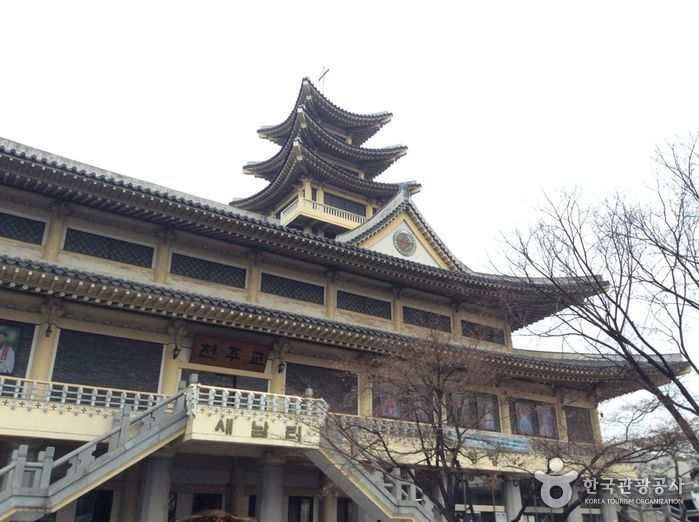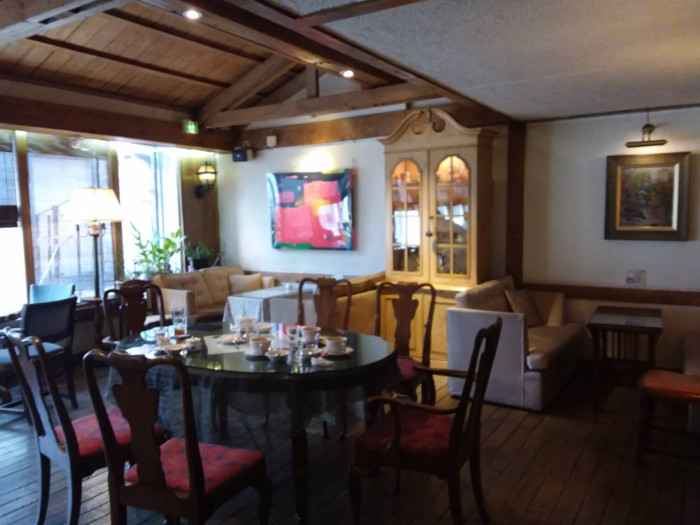Nine - ENTER 6 Gangnam Branch [Tax Refund Shop] (나인(엔터식스 강남))
3.3Km 2024-04-19
B1, 176, Sinbanpo-ro, Seocho-gu, Seoul
-
Bank of Korea Money Museum (화폐박물관)
3.3Km 2024-03-18
39 Namdaemun-ro, Jung-gu, Seoul
This Renaissance-style three-story stone building is the museum of the Bank of Korea. The older Bank of Korea was established as the central bank of the Korean Empire in 1909 and has been designated as a National Historical Site. During the Japanese colonial period, the bank was renamed the Bank of Joseon, and the building was used as the main and head office of the Bank of Korea until 2001. The building has been used as the nation’s Money Museum since June 2001 in celebration of the 50th anniversary of the Bank of Korea. The museum has 13 exhibition rooms on two floors, with one basement floor and two above-ground floors. It holds special exhibitions of various currency and art collections to provide domestic and foreign visitors with the opportunity to enjoy the history and culture of currency. Visitors can learn about the Bank of Korea and the central banking system, as well as how to identify counterfeit notes and how money is produced and circulated. It is also a good place for children to learn about currencies from around the world. Advance reservations are required, and parking is not available. The museum can easily be reached via subway by getting off at Hoehyeon Station (Seoul Subway Line 4) and exiting through Exit 7.
Saenamteo Catholic Holy Place of the Martyrs (새남터기념성당)
3.3Km 2020-03-31
80-8, Ichon-ro, Yongsan-gu, Seoul
+82-2-716-1791
When taking the subway from Seoul Station to Yongsan Station, you will notice a tall and distinct hanok (traditional Korean architecture) building; this is Saenamteo Catholic Holy Place of the Martyrs. Construction of the building began in 1984, the year of the 200th anniversary of Catholicism in Korea, and was completed after three years.
Also called "Nodeul" and "Sanamgi," Saenamteo was used as a military training ground during the early Joseon period. It was also the place
where convicted felons and the Sayuksin (the six martyred ministers) were executed.
Many Catholics were executed here during the Sinyu Persecution of 1801, the Gihae Persecution of 1839, the Byeongo Persecution of 1846, and the Byeongin Persecution of 1866. Among those executed were 11 priests including the first Korean priest Kim Taegon (Andrew), the first Chinese priest that came to Korea Ju Mun Mo (Jacobus), the first French priest that came to Korea Bishop
Imbert and other Catholics including Hyeon Seok-mun. There is also an altar here where the remains of nine Catholic saints are enshrined.
CAFE COIN (카페코인)
3.3Km 2021-03-19
10, Myeongdong, 6-gil, Jung-gu, Seoul
+82-2-753-1667
A café featured in a popular Korean drama. This is a cafe located in Jung-gu, Seoul. The representative menu is tiramisu.
Kim Han Sung Plastic Surgery [Tax Refund Shop] (김한성성형외과)
3.3Km 2024-04-23
11F, 590, Gangnam-daero, Gangnam-gu, Seoul
-
Artbox - Garosu Branch [Tax Refund Shop] (아트박스 가로수)
3.3Km 2024-04-16
Store #3, B1 of Block B, 139, Dosan-daero, Gangnam-gu, Seoul
-
Willbe Plastic Surgery [Tax Refund Shop] (윌비성형외과의원)
3.3Km 2024-06-27
590, Gangnam-daero, Gangnam-gu, Seoul
-
Sinsa Su Pharmacy [Tax Refund Shop] (신사수약국)
3.3Km 2024-04-16
1F, 28, Apgujeong-ro 28-gil, Gangnam-gu, Seoul
-
Youngone Corporation [Tax Refund Shop] (주식회사 영원무역)
3.3Km 2024-04-19
159, Mallijae-ro, Jung-gu, Seoul
-
Nolbu Budaejjigae Myeongdong (놀부부대찌개 명동)
3.3Km 2024-03-11
16-1, Myeongdong, 10-gil, Jung-gu, Seoul
+82-2-3789-0110
Situated in Myeongdong, Nolbu Budaejjigae in Myeongdong is exclusively dedicated to budae jjigae (sausage jjigae). Budae jjigae is a typical Korean fusion food consisting of ham, sausage, kimchi, extra instant noodles, tiny rice cakes, glass noodles, and spicy seasonings. They use selected ham and sausage in a bone broth, and fresh noodles that are not fried, giving the dish a light and refreshing flavor. Patrons have the option to spicy stir-fried small intestine and shrimp hot pot. The seasoned spicy stir-fried webfoot octopus or spicy stir-fried chicken cooked on an iron plate is also a must-try.



![Kim Han Sung Plastic Surgery [Tax Refund Shop] (김한성성형외과)](http://tong.visitkorea.or.kr/cms/resource/43/2890643_image2_1.jpg)
![Artbox - Garosu Branch [Tax Refund Shop] (아트박스 가로수)](http://tong.visitkorea.or.kr/cms/resource/48/2879748_image2_1.jpg)
![Willbe Plastic Surgery [Tax Refund Shop] (윌비성형외과의원)](http://tong.visitkorea.or.kr/cms/resource/58/3314358_image2_1.jpg)
![Sinsa Su Pharmacy [Tax Refund Shop] (신사수약국)](http://tong.visitkorea.or.kr/cms/resource/76/2879676_image2_1.jpg)
 English
English
 한국어
한국어 日本語
日本語 中文(简体)
中文(简体) Deutsch
Deutsch Français
Français Español
Español Русский
Русский